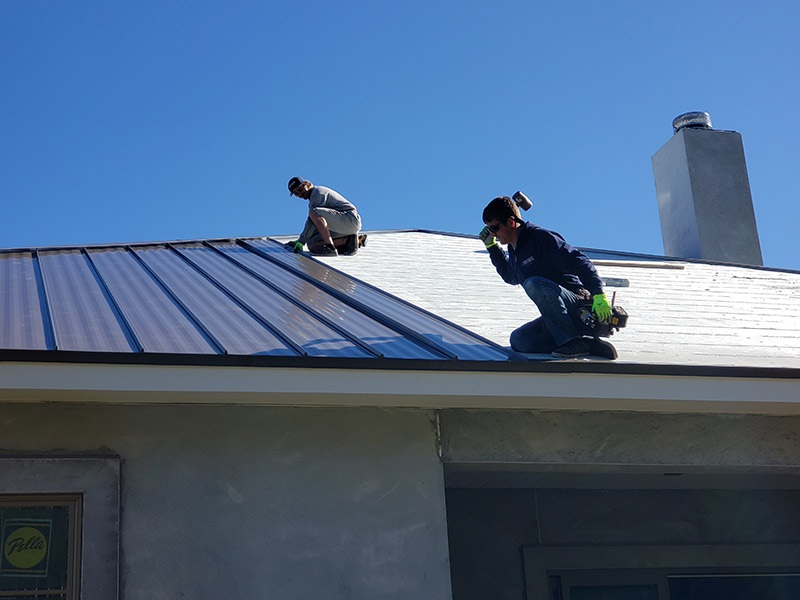
Taking down an old deck or patio can lead to a whole new outdoor space, and you can do a lot of the work yourself with some thoughtful planning. You’ll also discover some good ways to deal with the debris, including lumber and concrete, along with keeping your cleanup quick and inexpensive as well.
Checking Deck Stability Before Removal
Before you touch tools, inspect the structure. Look for rot, rusted fasteners, cracked joists, squirmy railings, and any posts that are shifting or sinking. Determine how the deck or patio is attached to the ground. For decks, find the ledger board and see if it’s bolted to the house or resting on posts. Be sure to contact 811 (or your local utility locator) to mark any underground lines before you dig, pry, or jackhammer. And, if there are any lights, outlets, or hot tub circuits in the vicinity, be sure to shut off power and cap any water lines that would feed hose bibs or outdoor kitchens.
Tools for Safe Demolition
Assembling tools to use for demolition process is easier and much safer when you have the right equipment. Lay out your gear before you start the work and try to keep walkways cleared so you are not tripping over cords, wiring, and debris. Wear your PPE (see https://www.osha.gov/personal-protective-equipment for safety standard) from the first screw you pull to the last nail you sweep; safety glasses, cut resistant gloves, hearing protection, long sleeves, and sturdy boots.
- Pry bar and cat’s paw to lift deck boards or pry out stubborn nails
- Impact driver with miscellaneous bits to back out screws
- Reciprocating saw with wood and metal blades to cut nails, screws and joists
- Circular saw with adjusted depth to slice boards without cutting down to joists below
- Sledgehammer to break up railings and small portions of concrete
- Floor scraper, cold chisel and small demo hammer for patio pavers or thin slab edges
- Wheelbarrow, heavy tarps, buckets, and magnetic nail sweeper for cleanup
- Optional: dumpster rental to organize debris as you go, minimizing your mess and trips to transfer station
Removing Nails and Screws
Progress in an orderly fashion so the structure remains predictable. In the case of a deck, always start by removing railings and stair treads, then remove deck boards from the outside working back toward your house. You should always save removing the ledger board and the primary support posts for the end, as they help stabilize the frame until every other part is removed.
In the case of a patio, you should either pick up the pavers in rows, or if you have a thin slab of concrete, you can score it into smaller squares before prying it up.
Always back out screws when possible because it is easier to sort screws for recycling than it is to simply break them off with force, and it is safer. When nails still don’t come out, lift the board, use your cat’s paw or at the very least cut them off with the reciprocating saw at the shank. Load wood and metals into piles as you go, so when you are done a junk removal company or construction debris removal crew can efficiently load everything for you later.
For home demolition King of Prussia projects by homeowners that want a local point of reference, here is an example service location.
Handling Heavy Lumber or Concrete

Carrying large sized joists, beams, or a piece of concrete can damage you and the surrounding area if you don’t take your time. Reduce materials to a workable size, think about the path from where you take it to where you stage it, and don’t lift what you can’t handle—never lift alone. Take care of nearby siding, glass, and landscaping if you plan to swing a sledge by covering them with plywood or moving blankets.
- Cut down joists to sections of 4–6 feet and beams to sections of 3-4 feet instead of moving full lengths
- If dealing with concrete, use a jackhammer or rotary hammer and establish a pattern of scoring and breaking it down into pieces you can lift safely, e.g., “suitcase” pieces
- Slide heavy sections on plywood “sleds” or lift and roll them on various short lengths of pipe to reduce the amount being lifted
- Stack lumber with stickers (spacers) so that it dries and can be picked up easily, and keep the points from the nails all facing the same way
- For big loads, or tight access, you can have a property cleanout service come to bring labor and a truck all in one
Cleaning Up the Site Afterward
The best demolition is one that is over with a clean, safe site. Try to sweep up the splinters! After you are finished, it is a good idea to go over the soil, gravel and driveway area with a magnetic nail sweeper to see if you have missed any hidden fasteners.
Being able to separate wood, metal and concrete will speed up removal and afford you better recycling options. Many facilities will allow you to drop off clean concrete for shredding or re-use, metals can be taken to scrap, and pressure treated lumber will often be sent to the landfill. Click this link to learn more.
Load debris in layers—heaviest on the bottom and lighter on top, so it can’t shift when you transport it. If you are hiring someone else to demo to site clean-up, you can book debris pick-ups and ideally work with a local crew that understands
A few final thoughts: before you begin, take relevant pictures; take a small bin for bits of sharp metal, and keep it separate from the wood; and bring sequential punch list of items to check so that you do not leave behind things under shrubbery or under steps. With careful planning, the right tools, and smart disposal—whether that is working with a dumpster rental or making a quick call to a junk removal company—you will finish quicker and be ready for the next stage of your outdoor upgrade.











